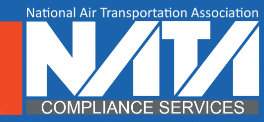
It looks like winter is continuing to roar into 2014, with snow and ice shutting down schools and businesses in places it hasn’t snowed in more than a generation, like southern Mississippi. Naturally, this greatly affects air transportation industries.
In just the last week of January this year, more than 7,000 flights were canceled across the country, with the bulk of them being in Atlanta’s Hartsfield-Jackson International airport.
Who Can We Send the Bill To?
Experts estimate that flight delays — caused by weather or otherwise — cost airlines $78 per day. The costs of bad weather are mighty, and they affect every nook and cranny of the air transportation industry:
-
Equipment, energy and additional air traffic staff to de-ice planes and ensure they are safe to take off in icy conditions
-
Melting the ice on airport property so that passenger buses can safely take them to their planes
-
Additional airline staff, in person and in call centers, to support the flood of customer service requests to change flights
-
Good-faith food or hotel vouchers
-
Additional food inventory to pacify hungry passengers stranded at the airport
-
Replacement staff to cover shifts for employees who can’t make it to work due to the weather
And these are simply financial costs. There’s also the cost of the suffering of employees who are saddled with extra stress (in an industry that already has a high level on a good day) as they deal with irate customers, impossible demands from employers, and FAA restrictions on when planes can travel in inclement weather.
Certainly, everyone in air transportation factors in some loss each year due to flight delays and cancellations, but starting the year out with so many is disheartening for those paying attention to the bottom line. It would seem the air transportation industry is not off to an auspicious start in 2014.
How to Reduce the Cost (and Stress) of Bad Weather
While there’s certainly no magic bullet to keep the rain, sleet, and snow from affecting your industry, there are a few ways to at least alleviate the stress and inflamed cost it can bring.
-
Have on-call staff for bad weather. This could be pulled from your regular staff pool, or you could set up a group of temporary employees who are already vetted, trained, and in compliance with FAA regulations. Ensure that they have the means to get to the airport during inclement weather.
-
Reinforce your training procedures for bad weather. Stress the importance of your staff not getting overwhelmed with irate customers and give them the tools they need to effectively deal with tense situations
-
Pay attention to the weather and plan accordingly. This tip probably goes without saying, but a little preparation can go a long way. If you run food services at an airport, knowing that inclement weather is on its way can alert you to buy extra inventory to pacify those hungry customers.
The Unsung Heroes
There’s story after story online about the poor passengers who suffer at the hands of unpredictable weather (much of it caused by the polar vortex that was pushed unusually south this year), but there’s little said about the employees who do show up to work at ticket counters, security, airport restaurants and stores, and the planes themselves. They, too, suffer when weather takes its toll.
They put up with passengers who, after camping out in an airport and having their travel plans squashed, are anything but pleasant. They show up to do their jobs, no matter what the weather. We salute these unsung heroes of air transportation. Here’s hoping it clears up soon.





